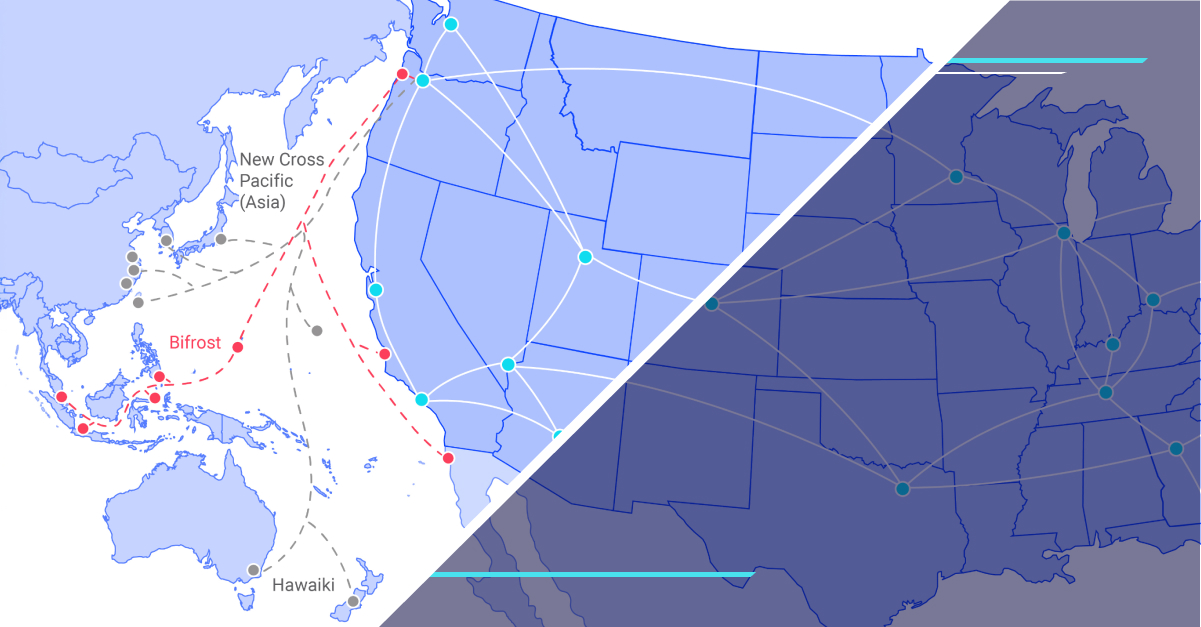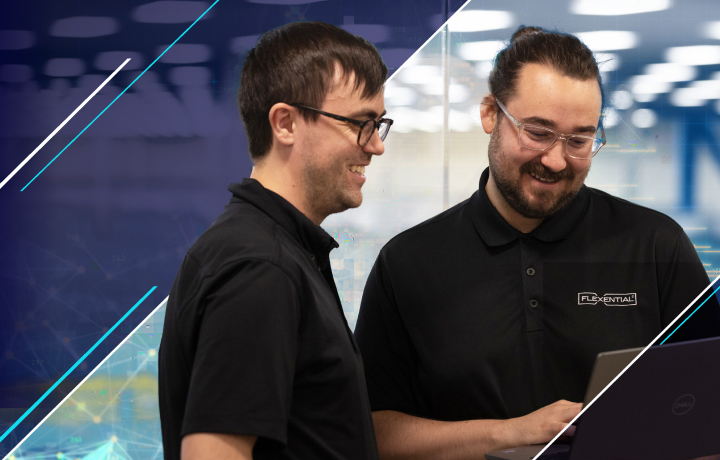What is cloud workload security? Everything to know
Cloud workload security doesn’t always get the attention it deserves, until there’s a problem. As more organizations shift to cloud-based infrastructure, the question isn’t whether to secure workloads, but how to do it across environments that are constantly changing. This post breaks down what cloud workload security really means, why it matters, and what it takes to get it right.

Introduction to cloud workload security and protection
Understanding the concept of cloud
Before you can secure a cloud workload, you need to understand the foundation it runs on. A cloud infrastructure is made up of the hardware, software, and networking components that deliver cloud services. Instead of hosting infrastructure on-site, organizations tap into a distributed network of servers that manage applications, data, and services remotely.
The result? A more scalable, flexible, and cost-efficient way to operate.
What is cloud workload?
A cloud workload refers to any application, service, or process running in a cloud environment. That could mean hosting websites, delivering online applications, processing transactions, storing data, or even handling large-scale analytics.
Cloud workloads are designed to be elastic; they scale up or down based on demand. This flexibility is a big part of what makes the cloud so appealing. These workloads typically run on virtualized infrastructure that helps optimize performance and allocate resources more efficiently.
You’ll find cloud workloads everywhere: powering customer-facing apps, driving real-time data analytics, and supporting mission-critical operations like backup and data recovery.
Why is cloud workload security important?
As cloud adoption grows, so does the need to protect the workloads that power your business. These workloads often contain sensitive data: financial information, intellectual property, customer records, and more. If a workload is compromised, the consequences go beyond downtime. There’s potential for regulatory violations, revenue loss, and lasting damage to customer trust.
Cloud workload security focuses on safeguarding cloud-based apps and services from unauthorized access, data leaks, and emerging threats. Whether you're operating in a public, private, or hybrid environment, the goal is the same: keep your workloads safe, available, and compliant.
Understanding the shared responsibility model
Cloud security is a shared effort. Your cloud provider is responsible for securing the infrastructure. You are responsible for everything you put into the cloud, including your data, applications, access controls, and configurations. That includes cloud workload security. If it runs in your environment, protecting it is your responsibility. A clear, proactive strategy is essential.
Why is there a need for cloud workload security?
The cost of security breaches
When a cloud workload is compromised, the impact reaches far beyond IT. There are immediate costs tied to recovery and remediation, but that's just the beginning. Fines, legal fallout, and lasting damage to your reputation can follow.
Cloud workloads often support essential functions. If something goes wrong, the ripple effect can be felt across the entire business. That includes downtime, lost revenue, and a hit to customer confidence that’s hard to win back.
The increasing complexity of cloud infrastructures
Cloud has changed the game for flexibility and scale, but it also makes everything more complex. You're not just managing a single environment. You're juggling public and private resources, APIs, third-party services, and constant configuration changes.
That complexity makes it easier for gaps to appear. And where there are gaps, there are risks. Security needs to keep pace with how fast the infrastructure moves, especially when optimizing workload strategy for performance and efficiency.
How cloud threats are getting smarter
Cyber threats are always changing. Attackers are constantly finding new ways to exploit weaknesses, including misconfigured settings, exposed APIs, and third-party integrations.
As your cloud environment expands, the number of potential entry points increases. And the more connected your systems become, the harder it is to spot issues before they cause real damage. Cloud workload security solutions have to scale with that complexity to remain effective.
Key components of cloud workload security
Protecting workloads in the cloud takes more than just strong passwords and a firewall. It requires a layered approach built on several key components that work together to minimize risk and improve visibility.
Identity and access management
Controlling who has access to what is the foundation of cloud workload security. Identity and Access Management (IAM) tools make it possible to assign the right level of access to employees, partners, and systems based on roles and responsibilities.
IAM isn’t just about granting access. It's about limiting unnecessary exposure, enforcing least privilege, and making sure every user action is traceable. That helps reduce insider threats, simplify compliance, and tighten control across the environment.
Data encryption
Encryption protects your data whether it’s stored or moving between systems. For cloud workloads, both encryption at rest and in transit are essential.
Encrypting data at rest makes stored information unreadable without the correct key. Encryption in transit keeps data secure as it moves between users, apps, and services. Together, they create a critical layer of protection against unauthorized access or interception.
System hardening
System hardening is the process of reducing vulnerabilities in your cloud environment. That includes disabling unused ports and services, applying patches, and removing default configurations that could expose your systems.
Regular updates and a standardized hardening process help reduce attack surfaces and make it harder for attackers to exploit known weaknesses.
Intrusion Detection Systems (IDS)
Intrusion Detection Systems monitor traffic and activity across your environment to detect suspicious behavior. By analyzing patterns and flagging anomalies, IDS tools help identify threats before they escalate into active breaches.
This kind of real-time monitoring is especially important in cloud environments, where workloads are often distributed and constantly changing.
Types of cloud workload security solutions
There’s no single approach to securing cloud workloads. The right solution depends on where your workloads run, how they’re managed, and the level of control your team needs. Public, private, and hybrid cloud models each introduce their own risks and requirements.
Public cloud workload security
Public cloud platforms like AWS, Azure, and Google Cloud offer flexibility and scale, but they also come with challenges. Shared infrastructure creates more exposure and gives your team less direct control.
To secure workloads in a public cloud, it’s essential to apply strong identity controls, encryption, and continuous monitoring tools that are built for multi-tenant environments.
Private cloud workload security
In a hosted private cloud, your team shares responsibility for security with the provider. You get more control and customization, but that also means you’re responsible for setting and enforcing policies.
Strong private cloud security requires clear access rules, frequent monitoring, and a proactive approach to patching and configuration. For some organizations, this level of control is a key reason for shifting workloads back to private cloud after experimenting with public platforms.
Hybrid cloud workload security
Workload security in hybrid cloud environments is crucial for enterprises that use a mix of private and public clouds or combine cloud platforms with on-premises systems. This approach gives teams flexibility and scalability, but it also introduces a distinct set of security challenges that require tailored solutions.
In a hybrid deployment, data and workloads move between environments. That movement makes consistent access controls and security policies harder to enforce. A security strategy needs to keep pace with shifting workloads while maintaining alignment across platforms. Without that consistency, configuration errors and access issues can lead to serious vulnerabilities.
Want to take a deeper look at how to align workload placement with your hybrid IT strategy? Download the white paper: Use Workload Placement to Optimize Hybrid IT.
The steps for implementing cloud workload security
Securing cloud workloads isn’t just about having the right tools. It’s about applying them in the right order, with the right understanding. These four steps help ensure your environment stays protected as it grows and changes.
- Understanding your cloud workload infrastructure: Start by mapping out your environment. Know where your workloads run, what they rely on, and how they connect. That visibility gives you the foundation to apply protections where they matter most.
- Identifying risks and vulnerabilities: Review your setup to find weak spots. This could include overly broad permissions, outdated configurations, or missing controls. Catching these early reduces your exposure to common threats.
- Implementing security measures: Once you know where the risks are, put the right protections in place. That includes setting up access controls, enabling encryption, configuring monitoring, and updating policies across all cloud resources.
- Continuous monitoring and maintenance: Cloud workloads change fast. Security needs to keep pace. Monitor activity, review alerts, and update your defenses regularly so you’re ready to respond to new threats as they emerge.
For a deeper look at aligning protection with business goals, see cloud strategy explained.
Overcoming challenges in cloud workload security
Even with a strong strategy in place, organizations face real obstacles when securing cloud workloads. These are three of the most common challenges and what it takes to move past them.
Dealing with compliance issues
With more regulations around data privacy and cybersecurity, staying compliant is an ongoing concern. A strong cloud workload security solution helps organizations meet requirements for data protection, audit trails, and access controls.
Compliance isn't just about avoiding fines. It's about showing customers, partners, and regulators that security is part of how your business operates every day.
Battling Advanced Persistent Threats (APT)
Advanced Persistent Threats (APTs) are stealthy, long-term attacks designed to infiltrate systems and stay hidden. These aren’t simple smash-and-grab breaches. They’re well-funded, strategic efforts to steal sensitive data or disrupt operations over time.
To defend against APTs, you need more than basic firewalls. Behavioral analytics, anomaly detection, and deep monitoring help surface the subtle signs of these threats before they cause real damage.
Overcoming lack of expertise
Keeping up with cloud security requires specialized knowledge, but not every team has it in-house. The pace of change is fast, and the skills gap is real.
Working with security experts or Managed Security Service Providers (MSSPs) is one way to close that gap. It gives your team access to current best practices and proven tools without having to build everything from scratch.
Future trends in cloud workload security
As infrastructure continues to shift and scale, cloud workload security is evolving along with it. Emerging technologies like AI, machine learning, and 5G are pushing the boundaries of what security needs to cover and how quickly it needs to respond. Staying ahead means paying attention to how these trends are shaping what comes next.
AI and ML in cloud workload security
AI and machine learning are changing how organizations detect and respond to threats in the cloud. These technologies analyze massive volumes of data, recognize patterns, and flag activity that falls outside the norm. That means faster detection, fewer false alarms, and the ability to respond to risks before they cause real damage.
As AI and ML continue to evolve, they become more effective with every data point. In cloud workload security, that translates to smarter, more proactive defenses that keep learning over time. To see how these trends connect to infrastructure strategy, explore how organizations are working to support AI-ready workloads.
Growth of Managed Security Service Providers
The demand for specialized security expertise continues to grow. Many organizations are turning to Managed Security Service Providers (MSSPs) to fill knowledge gaps and keep up with new threats. MSSPs bring 24/7 monitoring, up-to-date tools, and the ability to scale protections as environments grow more complex.
The role of 5G in cloud security
5G isn’t just about faster speeds. It changes how and where data is processed, especially as edge computing becomes more common. That decentralization creates new opportunities and new vulnerabilities. As more workloads push closer to the edge, security has to follow, protecting data that moves faster and lives in more places than ever before.
How to ensure robust cloud workload security for your organization
The tools matter, but so do the habits. Securing cloud workloads means building a system that holds up under pressure, adapts to change, and involves every part of your organization. Here's what that looks like in practice.
Regular audits and updates
Don't wait for something to go wrong. Routine audits uncover gaps in access controls, configurations, and policies before they turn into real problems. Updates are just as important. Keeping your systems patched and current helps block known vulnerabilities before attackers can take advantage.
Continuous improvement over quick fixes
Security is not a one-time project. It requires consistent review, testing, and adjustments as your systems evolve. What worked six months ago might not be good enough today. Building in time to reassess and improve helps you stay ahead of new risks.
Make security part of the culture
Your employees are on the front lines, whether they know it or not. Training people to recognize phishing, manage data responsibly, and speak up when something feels off can prevent security issues before they start. The more informed your team is, the stronger your overall defense will be.
Flexential cloud workload protection
Cloud workload security is not something to bolt on later. It has to be built in from the start. At Flexential, we work with you to design and deliver the right cloud solution for your business, backed by the protections and expertise to keep it secure.
Our team helps you understand your environment, identify risks, and put the right controls in place across public, private, and hybrid deployments. Whether you need better visibility, stronger compliance, or just fewer unknowns, we’re here to help.
Explore Flexential cloud services, or contact our team to get started!






